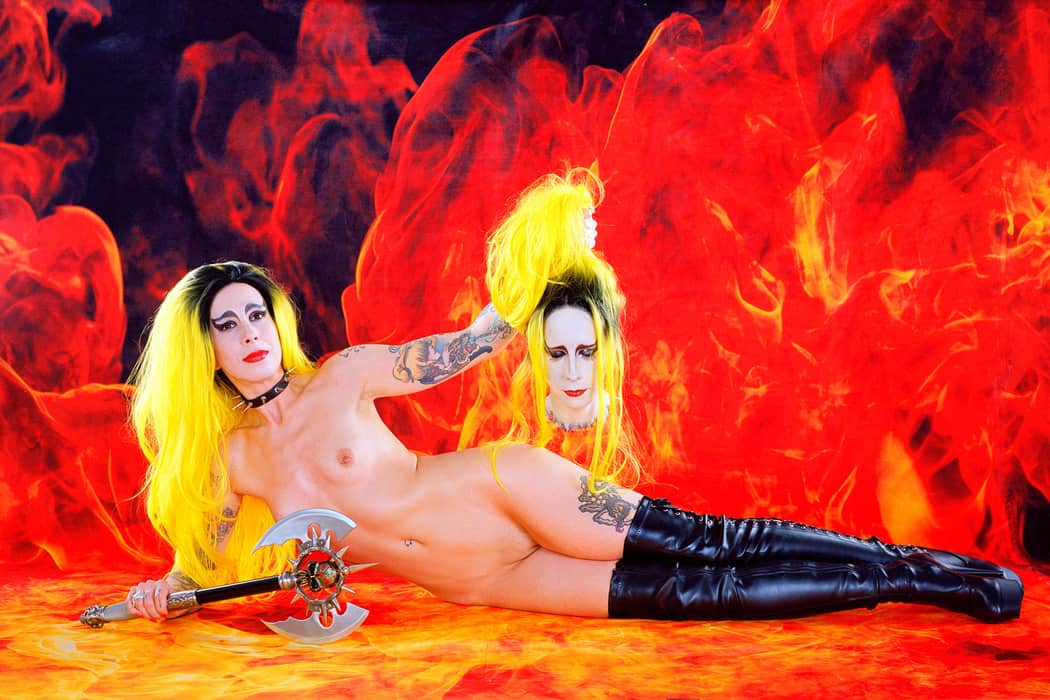Interview 069 • Aug 13th 2018
- Interview by Lou Noble, Portraits of Parker by Sarah Abrahmson
About Parker Day
Parker Day was born in San Jose, California in 1984. She studied photography at the Academy of Art University in San Francisco, California from 2002 until 2005. Day has exhibited in the US and abroad including solo shows at Superchief Gallery in both Los Angeles and New York, and Peyer Fine Art in Zurich, Switzerland. Group shows she’s participated in include the FRONT Triennial in Cleveland, Spring/Break Art Show in New York, and the Juxtapoz Clubhouse in Miami. Her work has been featured in Vogue Italia, Juxtapoz, Vice, i-D, Paper, and Dazed, among others. Not a Cult published her monograph ICONS, now in its second printing. Her next monograph, Possession, also published by Not a Cult, will be released in November, 2018. Parker Day lives and works in Los Angeles, California.
Links
Foreword
Parker Day's work is not what it appears on first glance. Her use of bright colors and out of this world styling acts as a means to further internal and external exploration of identity and how we express ourselves and interact with the world around us. We had the pleasure to catch up with her on her latest series, Brand Partner, that had even us on the TPJ team stumped as to whether these were real advertisements or a commentary on modern times.
This interview has been edited for clarity and content.
Interview
Tell me about the new project!!
So, the series I’ve been working on is called Brand Partner, and it’s about shining a light on, or line between, art and advertising, to see if there’s a line at all. I’ve been posting these faux ads on Instagram as part of the art itself, sort of like an online performance art. To see how people perceive it and interact with it.
What inspired it?
Well, after shooting with Polaroid, after shooting with other brands doing their ad campaigns, I was questioning where the distinction is between that work and my fine art work. And it is very fuzzy, I have mixed feelings about the whole thing, you know, especially in 2018, when artists need to do commercial work to eat, pay rent because your landlord doesn’t accept rent in exposure! Because I’m on the older end of Millennials, I remember when it was really gross to sell out.
Right, that was still a thing.
That was a thing! In the 90s, it’s kind of punk, DIY culture: you don’t sell out! Like, if you sell out, then you were totally tarnished in your community, your peers have no more respect for you. But now, when an Influencer, or someone else who’s got a big following on Instagram, posts their brand partnership, people are cheering for them because they’re just happy their buddy or someone they admire is getting paid, I guess?
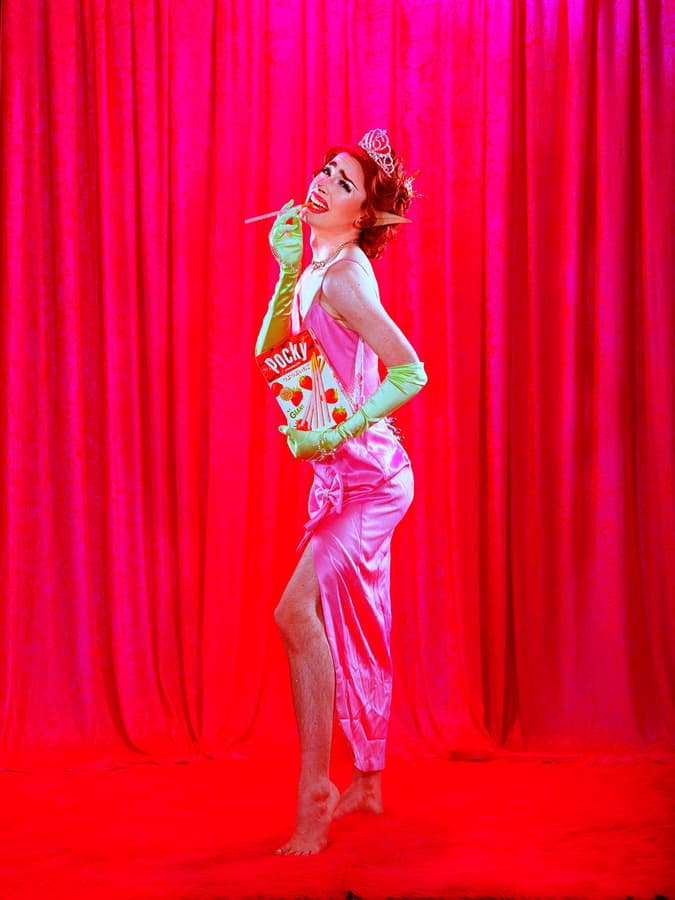
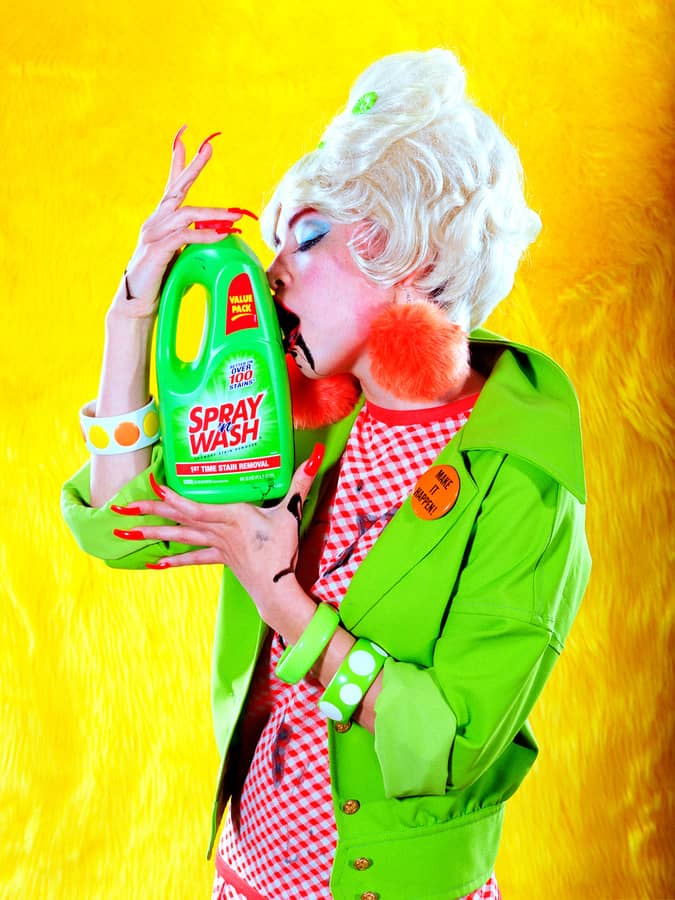
It’s a huge shift. I’m at the tail end of Gen X. I saw it happen and was shocked! But it’s, especially when we interview younger photographers, that’s just a goal rather than something to avoid.
Now, everyone wants to work for big brands. I feel like most photographers, what you see online is not fine art photographers, it’s commercial photographers.
For sure, yep. Even going to art school, I didn’t realize there was an option to be a fine art photographer. It’s like, yes, I had classes about the history of photography and learned about fine art photographers, but our teachers geared us towards getting commercial work. They never really presented it as a real possibility to get our work in galleries and museums, it was a pie-in-the-sky kind of idea.
Like what happens if your commercial work is popular enough to be able to sell as fine art?
Yeah, or what about just making that the approach from the get go. And being a fine art photographer in this strange world, because painting and sculpture is still generally more highly-valued. But then, as photographers, we sell our work in limited edition prints to generate scarcity, thus generating value, and so, to be a photographer is to be in this weird neighborhood of “wait, how do I make this scarce and special to generate value, but where does commercial work fit in with that?”
Well, and I think what ties it all together is value. Because you’re making fine art work, and there’s that consideration of value in the market, whether you’re doing commercial work or fine art, the goal is the same.
Totally.
To sell photography. I think that’s probably what people think about it nowadays, they’re more focused on, I’ve got to eat, I’ve got to make this pay.
But art made for a client is going to be tailored to what the artist thinks their expectations are. So it’s a watering down of the artist’s true vision and goals, and with advertising, it’s still trying to appeal to as mass an audience as possible, and there are a lot of brands who recognize that they have to look cool, so they’re not as monetized and boring as they may otherwise be. But yeah, it’s this delicate dance with brands!
Have you found that you’ve had to water your work down for any other brands?
Yeah definitely, 100%, yeah.
What has to come out?
Uh, the weirdness, the queerness. You know, can’t be too controversial, so yeah the weirdness and queerness has to be watered down.
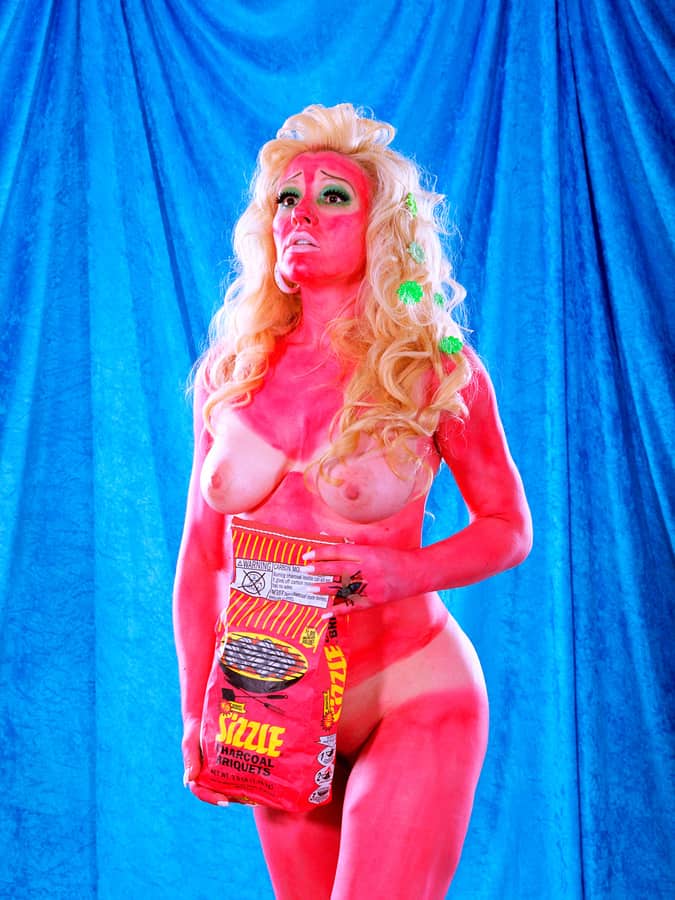
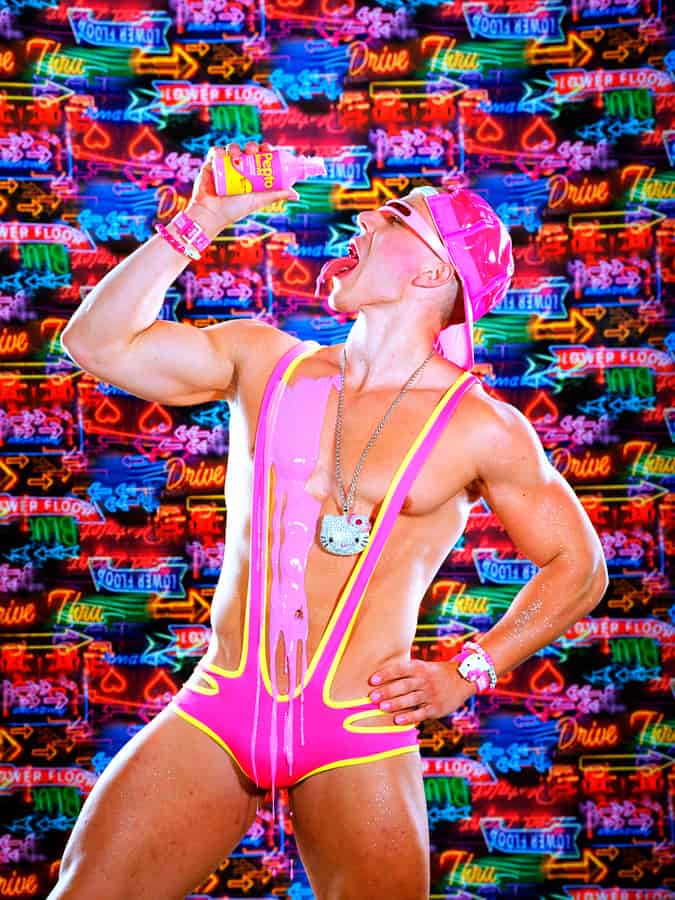
They want the visual style. But they don’t want any of the thematic undertones.
Right, which is what gives the work life, what makes it art, makes it applicable on a deeper level, makes people question.
Maybe that’s what people were afraid of when they were afraid of selling out, the stripping of the work.
Yeah exactly! That’s what I’m afraid of! I don’t want to neuter it, haha! I want it to have guts and teeth and naughty bits!
So with the series, what are you trying to ask of the audience?
I started off being like, “alright, if I were to make ads, these are the ads that I would want to make and these are the ads I would want to see.” I’m always confirming the perspective that you ought to create what you want to see in the world, and as an artist, we have a prime opportunity to do that, so I’m making the ads that I would like to consume. So it’s ads for a really freaky alternate dimension. I was hoping that people would stop in their “scrolling tracks” and question what they’re looking at, and question is this a real ad, what response am I having to it. I’ve seen some of that, but I’ve seen a lot more of people kind of blind to consuming, ha!
They’re just like, “oh yeah that’s an awesome ad!”
Yeah totally! Which is really weird, for me. So I have mixed feelings about that. I wonder if it’s effective as art, as a commentary, if people are just blindly consuming, then are they really expanding their minds or…
If they’re just taking it for granted that there’s no challenges, no tension.
And tension is what it’s all about, that tension. I want people to have that feeling of allure and diversion at the same time, the tension you’re in.
Whereas I guess the straight ad would get rid of that, so if people are only engaging with it on an aesthetic level, maybe discomfort, maybe you need to up the discomfort.
Exactly! I want to sharpen the teeth! Make it even more ridiculous! I was talking to one of my models the other day about Brand Partner, and he said, I didn’t even realize there were so many ads on Instagram until my friend mentioned it, and then I looked at my feed and realized that every fifth post was a sponsored post. And he said that he just thought, “oh, I just followed some boring people!”
I feel like that’s completely intentional. I noticed it maybe a few months ago, they stopped being intrusive. I would be like, oh who took this, oh wait a sec nobody I knew took this. They’ve become a lot more subtle, they kind of just blend into your feed.
Exactly, and now normal folks sponsor their posts because Instagram has got that stranglehold algorithm on if their content goes out.
Are you done with making the series? Or are you continuing to shoot it?
No, I’m still shooting it, yeah just kind of feeling it out right now. It’s nice, just throwing one out on social media every once in a while, I feel like people have forgotten what I’ve been up to! So they think it’s a real ad all over again. We’re going to do a calendar, an advertising style calendar.
Are you exploring different things in each image?
It usually ties to the product, I picked all accessible grocery or 99 cent store products. I’ve found myself, even though I do have an aversion to brand partnering in general, I found myself a little bit jealous of my peers who would partner with say, elite luxury brands, like Gucci or Chanel or Miu Miu, so I thought, by highlighting these products that anybody has access to, strips that away. And just the sheer humor that I would partner with Glad or something like (laughter) that that thing would come calling to me. The kitsch value is there for sure, and the unexpected nature. You are never going to see a poppers ad!
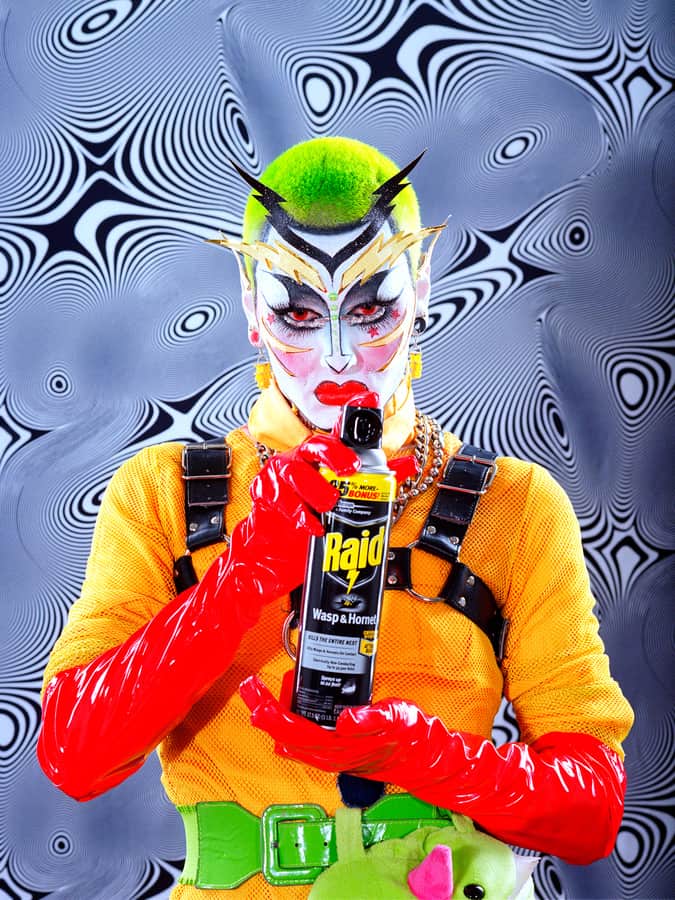
Nope!
Even when I bought the thing, I told the guy at the store what I was up to, and he was like, “oh, you should tag us!”
Were you looking for anything special in the models you used for this?
Hmm, as always I like unconventional models, people you wouldn’t expect as a spokesmodel.
Did you use models you’d used before?
Some of them, yeah. Now I’m at the point where I’ve shot with so many people that when I have an idea in mind, I know who can deliver the face or the body that I want, so with Femmi for instance, I knew she could give me those massive eyes, like she’s trying really hard to smile and sell it.
Did you use any new techniques?
Yeah, so this series is all shot with my Contax 645. Everything I shoot is unretouched color negative film. This is shot on medium format, Contax, and they’re capable of being enlarged 40 by 60 or bigger, no problem. I try to think of the end goal with anything I do. For this, I was thinking of advertising, you would want it on a large scale, for full impact, so it hits you over the head with the imagery.
Your previous series, Possession, what was your ultimate goal with that one, in terms of presentation?
Yeah, so Possession is 46 final images, which is the number of chromosomes in a human cell, which provides the blueprint for physical form, but not how we perceive it or what we do with it, and so it kind of questions, the whole series questions, are you your body and how does your body inform how you see yourself and how others see you. So I took very simple concepts relating to the body, like Disease, Hunger, Surgery, Blood, and explored them in a freaky technicolor way.
The book, published by Not A Cult is coming out in November, and Evan Pricco, the editor-in-chief of Juxtapoz, wrote the forward, which is amazing! Such a great writer, I have so much respect for him and what he’s doing with Juxtapoz, and we’re talking about doing a preview of the body of work and releasing the book during Miami Art Basel as part of Juxtapoz Clubhouse with Super Chief Gallery. And then Super Chief Gallery in LA in January, we’ll have a massive solo show for Possession.
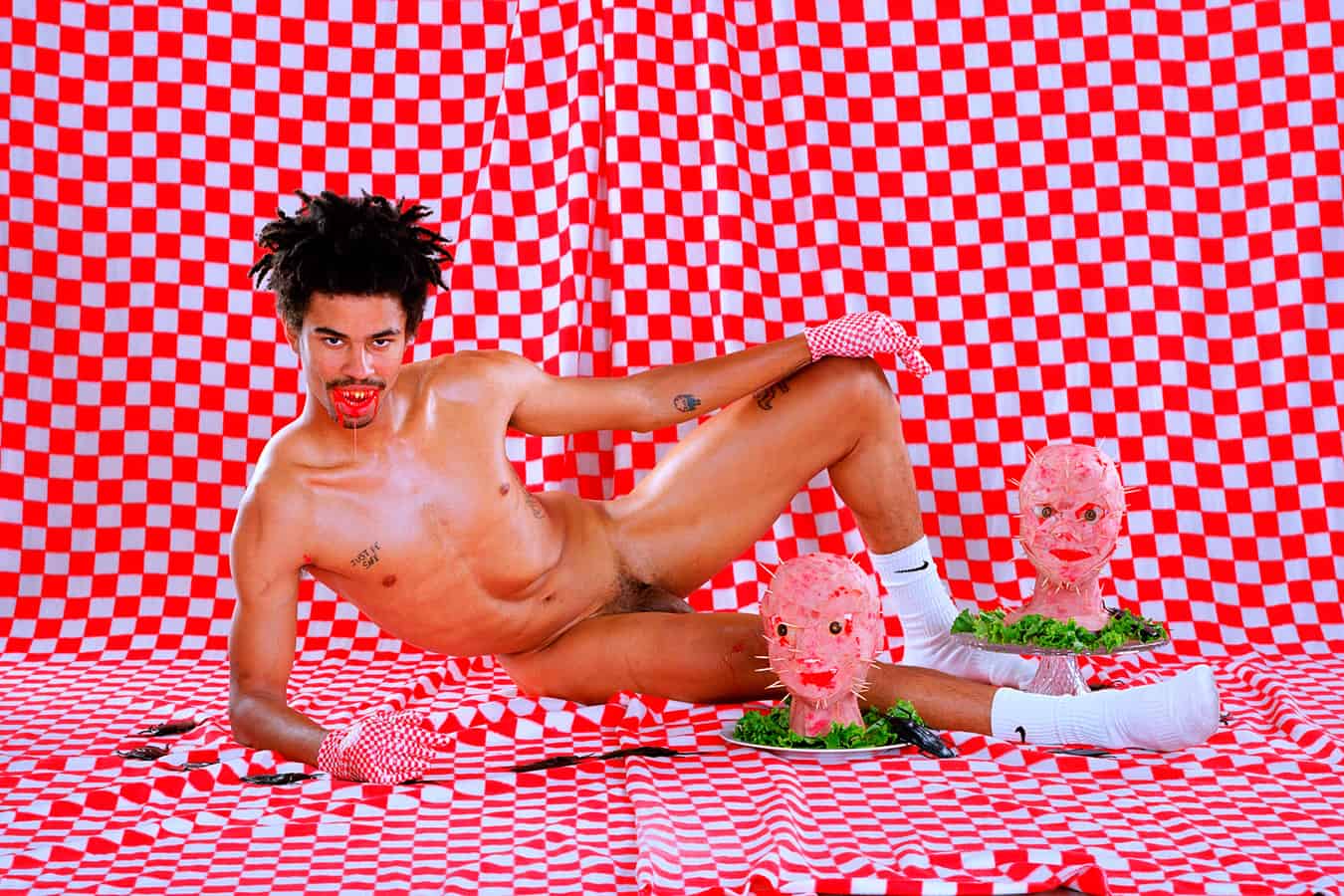
top: Hunger, below: Disease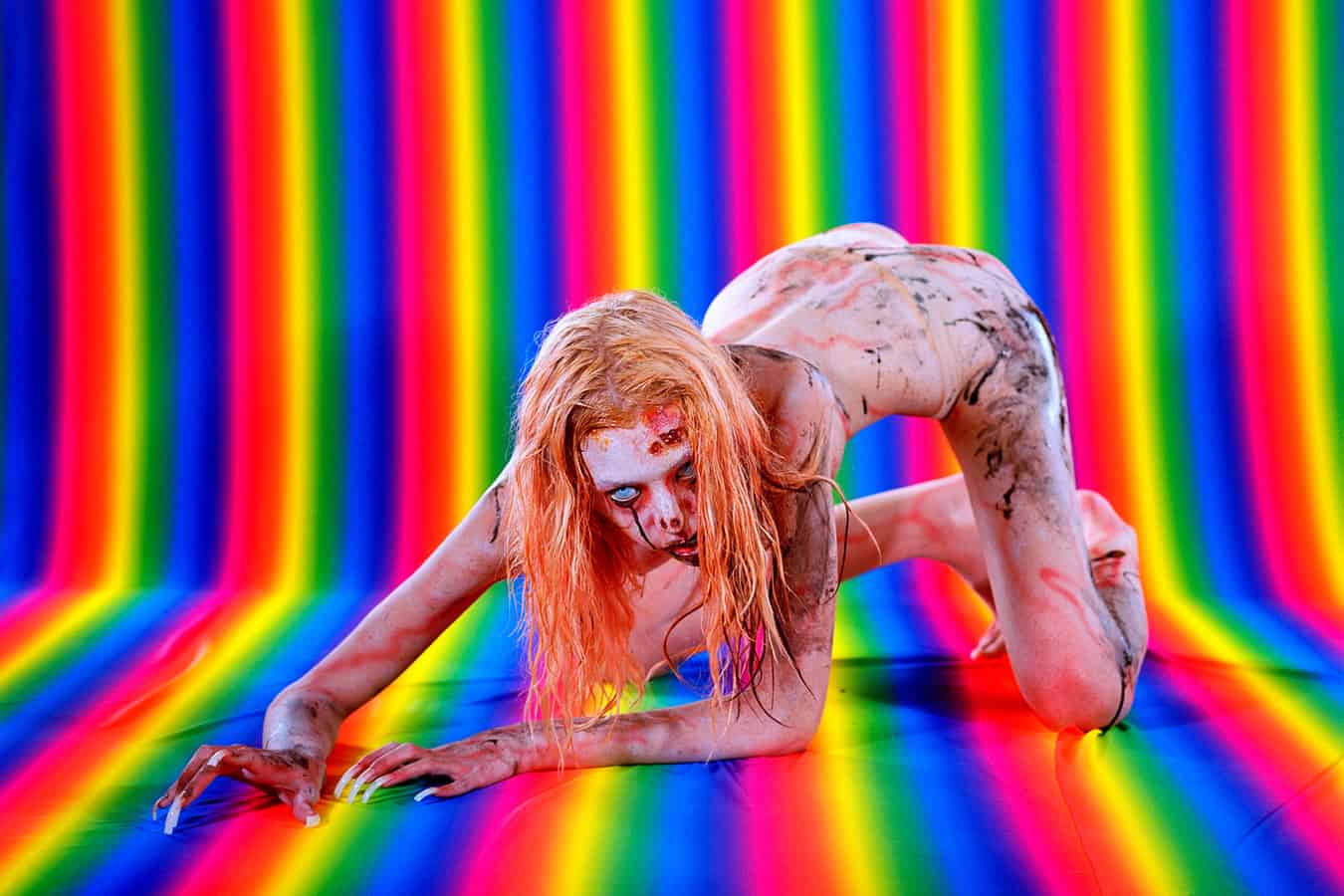
Do you have something similar in mind with Brand Partner? Or did you have a smaller scale goal?
Hmm I would like to, I think pick the strongest twelve and show them when I release the calendar, but it’s a series I’m still letting develop and it’s been interesting to put it out there on Instagram and see how people react. I’ve been taking screencaps of peoples comments, I was thinking of doing a Richard Prince-style presentation of it, have that be part of the end result of the work.
Right. Have you, what’s the most interesting comment you’ve gotten?
My friend Oli said, when I posted the Rush ad, “omg you got sponsored by RUSH???? Goals for life!!!!!!” Hahaha! Or…someone said, this is the only sponsored post I’ve ever enjoyed seeing (chuckles)…people saying “now I NEED Gushers”, so then I realized I really was making ads. If what I’m putting out there is selling a product, is doing the job of an ad, is it therefore not an ad?
You’re shooting an ad for free now.
Exactly! I was like like fuck! Wait a second, hold on! Isn’t everything an ad, in some way? Or you know, a public service announcement is motivating a non-consumer action.
Has it changed how you’re approaching the next few ones you make?
I think I want to make them more repellent, or do more that are more just…I would like for people to feel ashamed while desiring an object. When I do sexy stuff, I like there to be sort of a gross element, so you feel like a stinking pervert! It adds more fun to the experience.
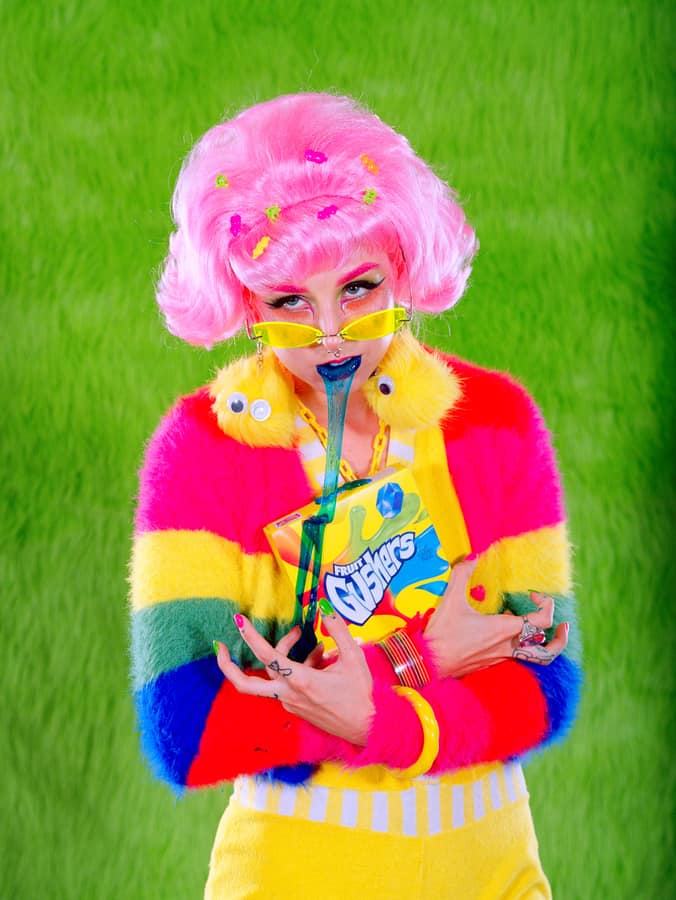
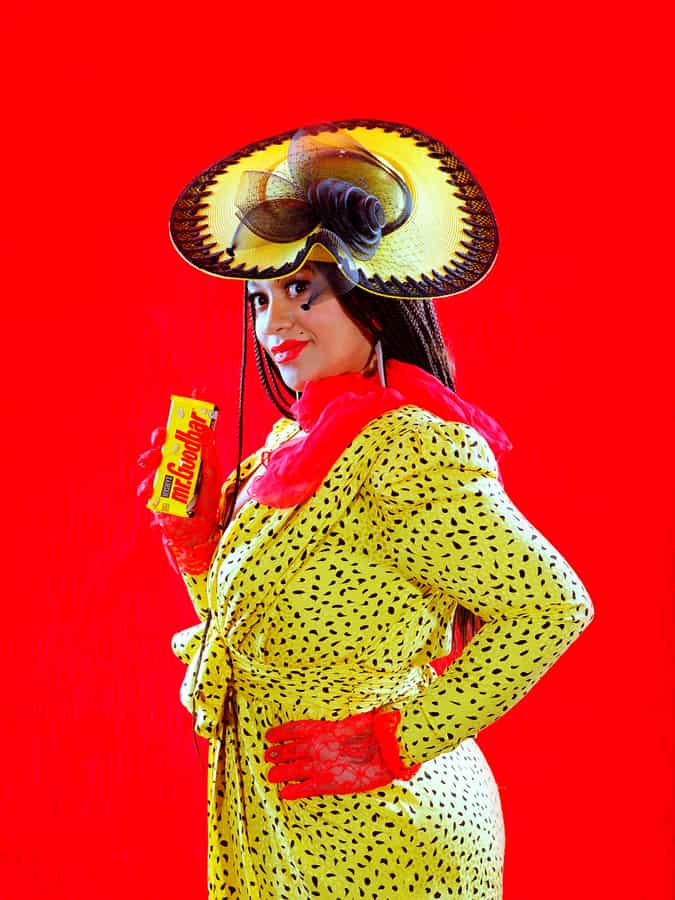
It’s layering, that layering of emotion is what creates depth, where it’s more than just a pretty image. Thinking about your visual style, you can be as gross as you want because the visuals are still kind of like, the palette is so pop and pretty.
Exactly, yeah it was very intentional when I first started shooting in the style I wanted, like that candy coating to lure people in because it’s inherently appealing, but for then for there to be something icky and unsettling underneath.
What is it that you like about creating that kind of discomfort?
I think creating that discomfort makes you question yourself and what aspects you’re identifying with, what aspects you’re rejecting. It’s like when you reject qualities in another person, it’s probably because you possess them in yourself and you don’t want to admit it. So the only way for people to truly embrace one another is to embrace themselves first and that takes bringing all of those shadow aspects into a whole self.
I don’t think it’s a matter of shining light into the shadow, I almost said that, but I think it’s more accepting the shadow aspects as it is. You don’t have to change who you are so much as accept who you are and move on! Put your focus on more positive things and just, you know the demons are there, ha! You don’t have to take them out all the time.
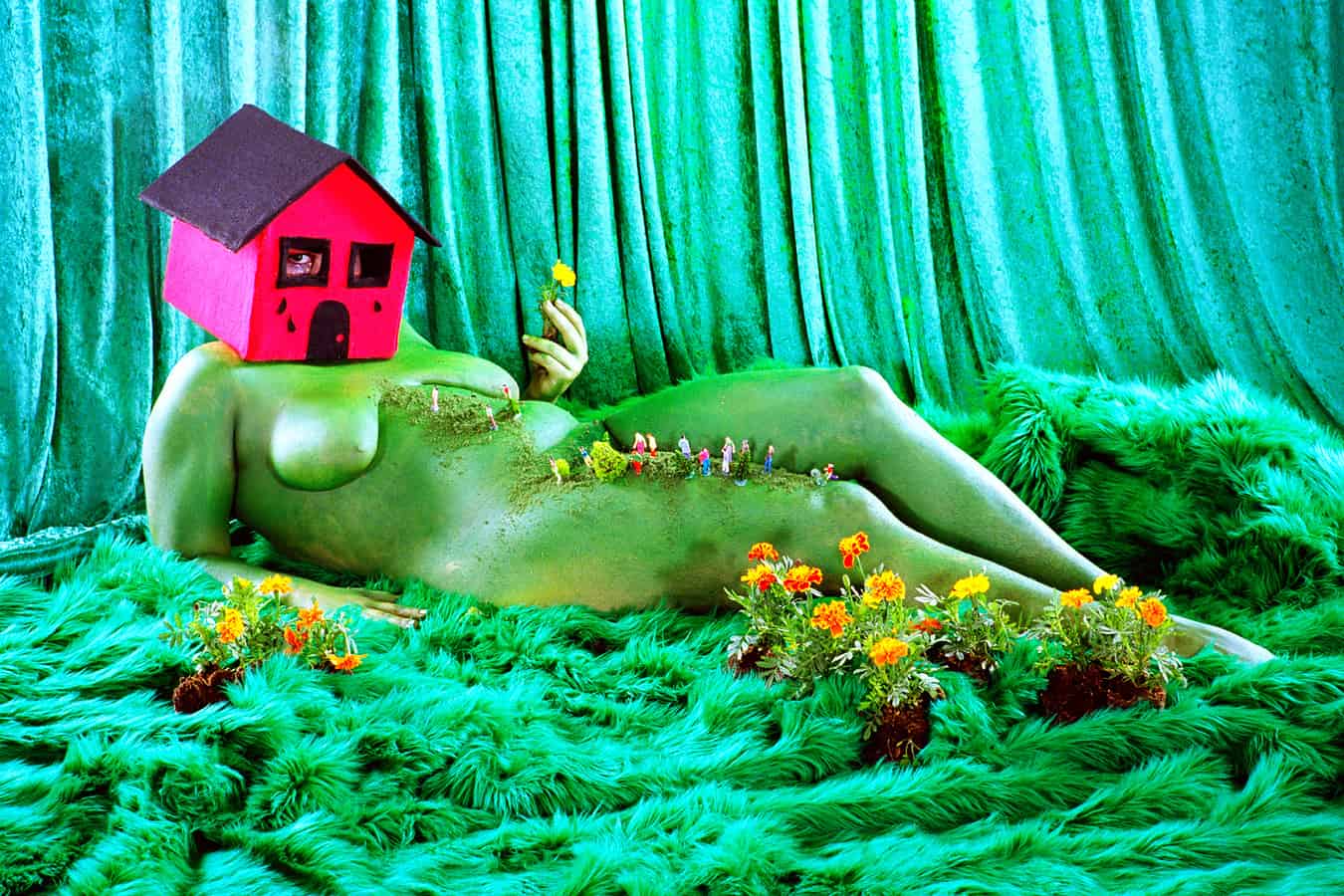
This series, it seems like the last two series are much more about identity, and this one is so much more about how we relate to commerce? Was that a conscious shift?
Yeah, see this is more of a mini-series, like exercise for myself. I think it is a commentary on who we are in a consumer relationship. Brand Partner, I picked that name because we spend so much time with brands it becomes a part of our identity, too. Think about fucking Hype Beast sneakerheads who worship at the altar of Supreme. And that’s a huge part of their identity, and it’s just a Supreme white tee.
And isn’t that what the brands want to sell when they partner, is that, the brands are trying to co-op the identity of the partner, and use that to reach their audience.
Exactly, totally. You see with these influencers who have partnered with whatever brand it may be, it’s always present as something they just like!
“I just really enjoy Crest, it just really speaks to me and how I live my life.” And followers eat it up, because followers want to have the aesthetic like the lifestyle of people they respect. We want to mirror people that we admire, that we respect, that we want to be. We want to feel what we think they feel like. And then you can buy a piece of that feeling.
It used to be so blatant in advertising in the 50s where, I don’t know, be glamorous, drink Coke, or whatever, they used text specifically telling you how you’re going to feel when you buy the product. But now that people don’t really watch TV or buy magazines, and have ad blockers: advertisers have to be more insidious. So advertisers have to find a new way to slither in. In the terrible trash mag, Us Weekly, they have that section, “Stars, They’re Just Like Us!”
Right. Like oh they’re using a knife or fork, oh yeah not so different after all.
I use a knife and fork! Yeah, totally. But with people who have become famous on social media, like you’re famous but also yes, they’re just like everybody else. Often times they’re not rich and famous, either, unless they have a lot of great paid partnerships.
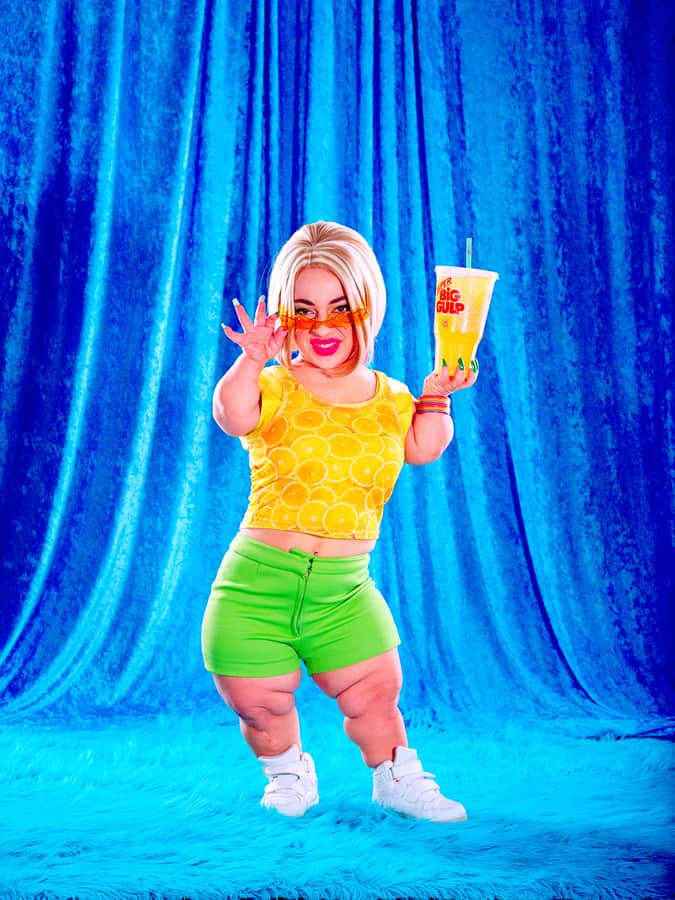
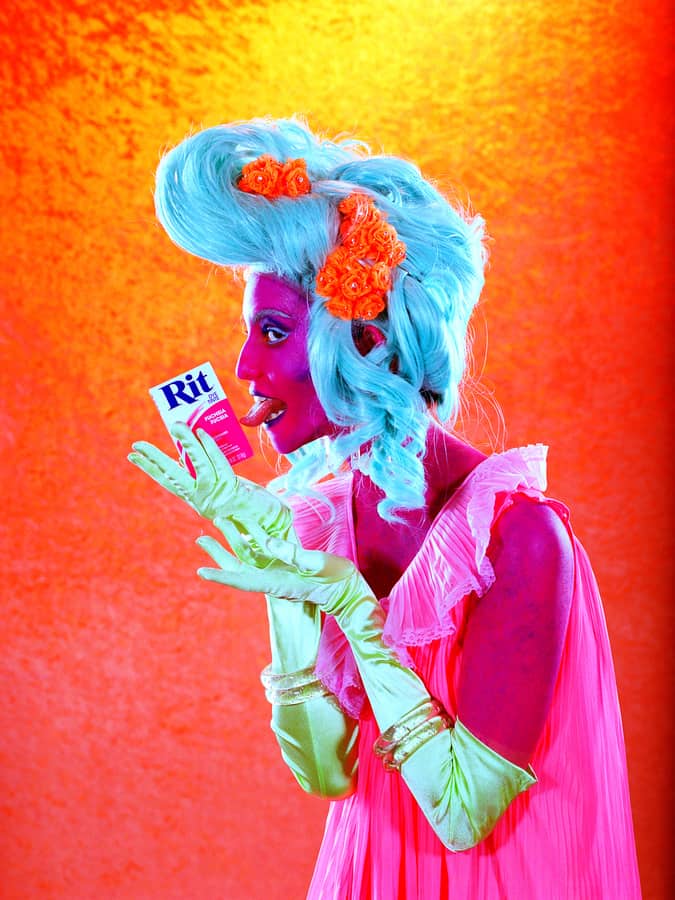
When you started your photographic career, did you know that you wanted to use your style to explore these different topics?
Its always evolving as my interests shift. I knew that I wanted to forge a style that would be mine, recognizably mine, and that I would feel connected to in such a way that I could keep going with it indefinitely. I did know that I wanted to explore like characters. I always knew that through shooting others I was representing myself, exploring myself. So if I’m shooting other people, it allows me to explore that, while having an amazing experience connecting with someone that’s completely unique.
Have you learned anything about yourself so far with this project?
It’s giving me the opportunity to question my goals as an artist and where I want to take my art, and questioning photography’s role as art, so I spend a lot of time thinking about that and how to put my fine art at the forefront, while still making a living on the way up there. (chuckles)
So with these, you’re, the inspiration starts with the product and the packaging?
Mhmm. Definitely, then creating a character to support the product. it’s really treating the subject as part of the packaging, then just working on having some emotion shine through in how I direct them.
It feels like, there’s definitely a lot of places to go with the project. Was it hard to narrow down what you wanted to say?
I think I’m still determining what I want to say that’s why it’s still a project in process, and I haven’t set a deadline for myself because I’m enjoying the unfolding of it as I share it and as I get feedback, and as I get internal feedback of how I feel about it and my interpretation of advertising and the line between it and art changes. So yes, it’s evolving. If I’m not evolving, it’s like death, haha! Without sounding too morose. But that’s why I create.
